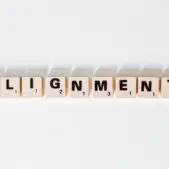No one day at a design agency is the same, especially here at UpTop. Every project that comes in is different, and every client is unique. Requirements, timelines, and budgets swirl like the wind. You can imagine why it’s so difficult to practice an ideal UX process, when the only constant is change.
Despite all of these variables, the design team at UpTop is always thinking of how to provide our clients with the greatest possible value.
So, what might you expect from UpTop for a UX project? Here’s a synopsis of some of the key steps of our ideal UX process.
Discovery
We want to know as much about our client’s business as possible in order to get a clear understanding of what they do, as well as why and how they do it. We also want to know as much about their customers as possible. What problem at the nexus of these two are we trying to solve for? How does it fit in the customer’s journey? What technology limitations do we have to work with? Through a series of interviews, analysis, and evaluation we’d hope to have a clear picture of the challenge ahead.
Research
If we could, we’d love to watch our clients’ customers use the product or app in question. We’d like to hear first hand what their pain points are, and what they might suggest to make things better. We’d like to analyze any site data that might be available, and if there isn’t, we can run some site behavior tools to find out. Through a combination of qualitative and quantitative analysis, this information will inform us on what problems we need to focus on and where. At times, the information learned from this stage will redefine the problem statement that came out of discovery.
Ideation, Prototyping, Testing, and Iteration
At our core, UpTop has generally practiced a lean UX process that resembles something like this: taking a concept > validating with the client > iterating > validating with client > prototyping > usability testing with customers
But over the past year, our design team has placed more of an emphasis on equipping ourselves with a design thinking mindset eager to tap into the customer, and developing lo-fidelity prototypes to test the viability of concepts. This approach is very intertwined with lean UX and has underscored the empathy that goes at the beginning of solving for any given problem. Thus, getting to the prototyping phase as quickly as possible to validate a concept before investing too much time and resources.
Most recently, we’ve borrowed some elements from Google Venture’s Design Sprint which is loaded with lots of great activities and exercises to push an idea forward to test it’s viability quickly. Individual ideation exercises to brainstorm new features, dot voting on those features, and performing a level of effort vs impact exercise have made for great workshop pillars in collaboration with our clients.
Our team typically creates prototypes using the InVision app, but when it makes sense, we use paper prototypes or even go as robust as Axure for more complex interactions. Prototypes are a great way to validate ideas early as well as communicate design concepts to stakeholders who otherwise wouldn’t be able to visualize the connection between static wireframes of an app.
Once a prototype is created, we would ideally like to walk about three to five customers through some task flows to see how usable our new designs are. We prefer to use RITE (Rapid Iterative Testing and Evaluation) testing which essentially consists of iterating critical feedback on a design concept that you receive from the first user down to the next and so on. This type of testing allows you to iterate and test for new ideas more quickly.
Wireframes and Visual Design
Once a design concept is validated, we typically design the complete experience of a site or app focusing on all of the key screens, interactions, user states, etc. Previously, this was typically in the form of Adobe Illustrator, but has since evolved into Sketch, which has permeated through the design industry becoming a new standard in its own right integrating seamlessly with mobile platforms and prototyping tools.
The next stage is layering hi-fidelity visual design onto the wireframes leveraging existing brand style guides or creating a custom brand guide for our clients. Putting the finishing touches before handing off our creations to development for final integration.
Conclusion
The overview above embodies our design team’s UX process at its core and the ways in which we strive to deliver more than just a product, but an experience as well. A constant push and pull of how much research or ideation to practice, trying to find the right balance with every challenge that we are dealt. Being scrappy when necessary when the budget doesn’t permit. But no matter what, always committed to providing our clients and their customers with value that they can recognize.


